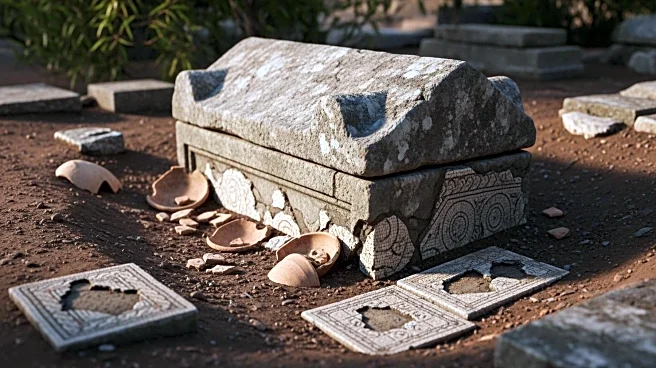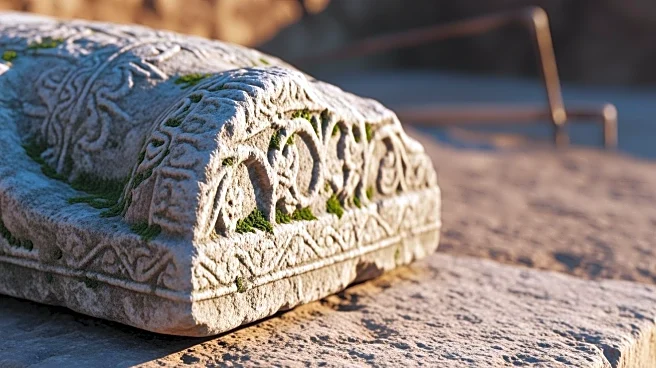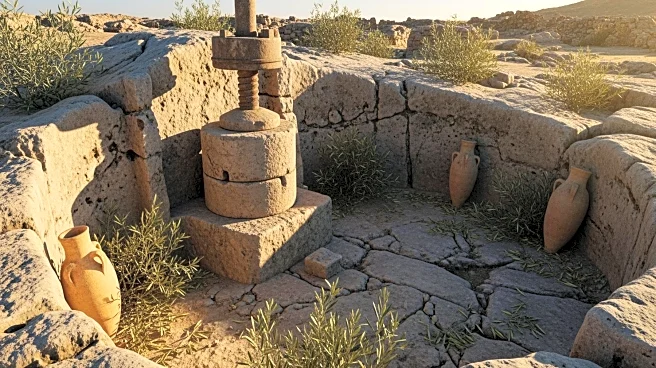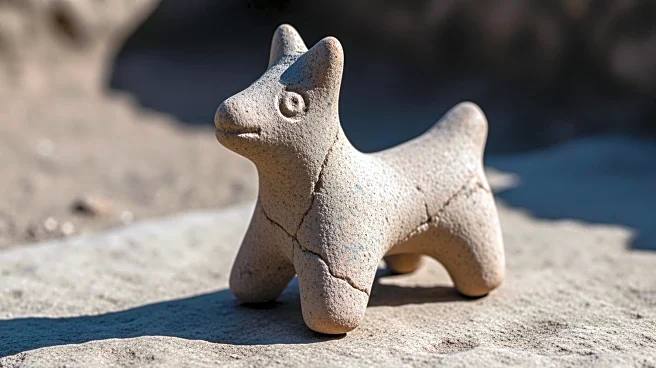What's Happening?
Archaeologists from the Budapest History Museum have unearthed a remarkably well-preserved Roman sarcophagus in Budapest, Hungary. The limestone coffin was discovered during a large-scale excavation in Obuda,
a district that was once part of the Roman settlement Aquincum. The sarcophagus, untouched by looters and sealed for centuries, contained a complete skeleton surrounded by artifacts such as glass vessels, bronze figures, and coins. The grave is believed to belong to a young woman, indicated by items like a bone hairpin and traces of gold-threaded fabric. The discovery provides a rare glimpse into Roman funerary customs and the life of the deceased, who was likely of higher social status.
Why It's Important?
This archaeological find is significant as it offers a unique window into Roman history and culture, particularly in the region that is now Hungary. The intact nature of the sarcophagus and the artifacts within it provide valuable information about Roman burial practices and social hierarchies. The discovery could enhance understanding of the Roman Empire's influence in Central Europe, contributing to historical knowledge and potentially attracting academic interest and tourism to the area. The artifacts may also offer insights into trade and economic conditions during the Roman period.
What's Next?
Anthropologists are set to examine the remains of the young woman to learn more about her age, health, and origins. This analysis could reveal further details about her life and the society she lived in. Additionally, the excavation team plans to sift through the mud inside the coffin, which may contain more artifacts such as jewelry. These findings could provide further evidence of the deceased's social status and the customs of the time. The ongoing research may lead to more discoveries in the area, potentially uncovering additional Roman structures and graves.
Beyond the Headlines
The discovery of the Roman sarcophagus not only holds scientific significance but also offers an emotionally resonant insight into ancient human relationships and expressions of love. The care taken in the burial process reflects the emotional bonds and cultural practices of the time, providing a poignant reminder of the continuity of human experiences across centuries. This aspect of the find highlights the intersection of archaeology with human emotions and cultural heritage, enriching the narrative of history with personal dimensions.












